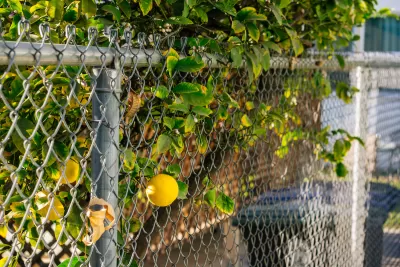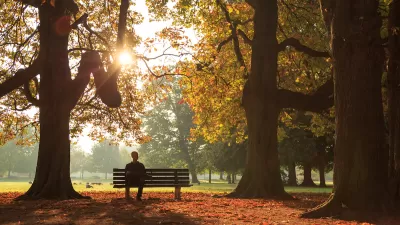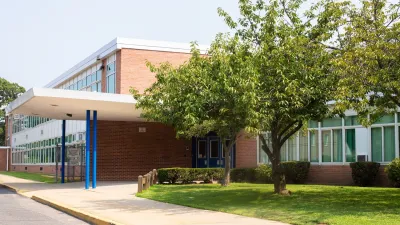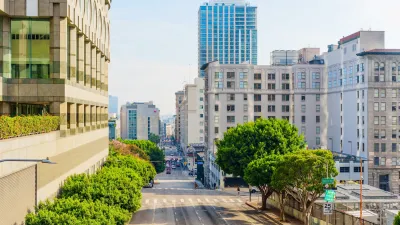Planting food-producing trees can offer both shade and a source of healthy foods in concrete-dominated neighborhoods.

It’s a well-known fact that trees can help reduce the urban heat island effect and lower temperatures in cities. Now, urban forestry advocates are touting another potential benefit of trees: food. As Max Graham explains in Grist, “Volunteers, school teachers, and urban farmers in cities across the country are planting fruit and nut trees, berry bushes, and other edible plants in public spaces to create shade, provide access to green space, and supply neighbors with free and healthy food.” In Tucson, an effort to plant mesquite trees combines the need for shade in the sun-drenched Arizona city with the mesquite’s traditional role as a food plant.
While urban forests are unlikely to provide a steady food supply for everyone who needs it, they can help supplement diets and provide access to fresh fruits. In Philadelphia, the Philadelphia Orchard Project produced over 11,000 pounds of fresh produce last year. “Another well-established food forest skirts the Old West Church in Boston, where volunteers have spent a decade transforming a city lawn into a grove of apple, pear, and cherry trees hovering over vegetable, pollinator, and herb gardens.”
FULL STORY: Hot? Hungry? Step inside these food forests.

Planetizen Federal Action Tracker
A weekly monitor of how Trump’s orders and actions are impacting planners and planning in America.

Restaurant Patios Were a Pandemic Win — Why Were They so Hard to Keep?
Social distancing requirements and changes in travel patterns prompted cities to pilot new uses for street and sidewalk space. Then it got complicated.

Maui's Vacation Rental Debate Turns Ugly
Verbal attacks, misinformation campaigns and fistfights plague a high-stakes debate to convert thousands of vacation rentals into long-term housing.

In California Battle of Housing vs. Environment, Housing Just Won
A new state law significantly limits the power of CEQA, an environmental review law that served as a powerful tool for blocking new development.

Boulder Eliminates Parking Minimums Citywide
Officials estimate the cost of building a single underground parking space at up to $100,000.

Orange County, Florida Adopts Largest US “Sprawl Repair” Code
The ‘Orange Code’ seeks to rectify decades of sprawl-inducing, car-oriented development.
Urban Design for Planners 1: Software Tools
This six-course series explores essential urban design concepts using open source software and equips planners with the tools they need to participate fully in the urban design process.
Planning for Universal Design
Learn the tools for implementing Universal Design in planning regulations.
Heyer Gruel & Associates PA
JM Goldson LLC
Custer County Colorado
City of Camden Redevelopment Agency
City of Astoria
Transportation Research & Education Center (TREC) at Portland State University
Jefferson Parish Government
Camden Redevelopment Agency
City of Claremont





























